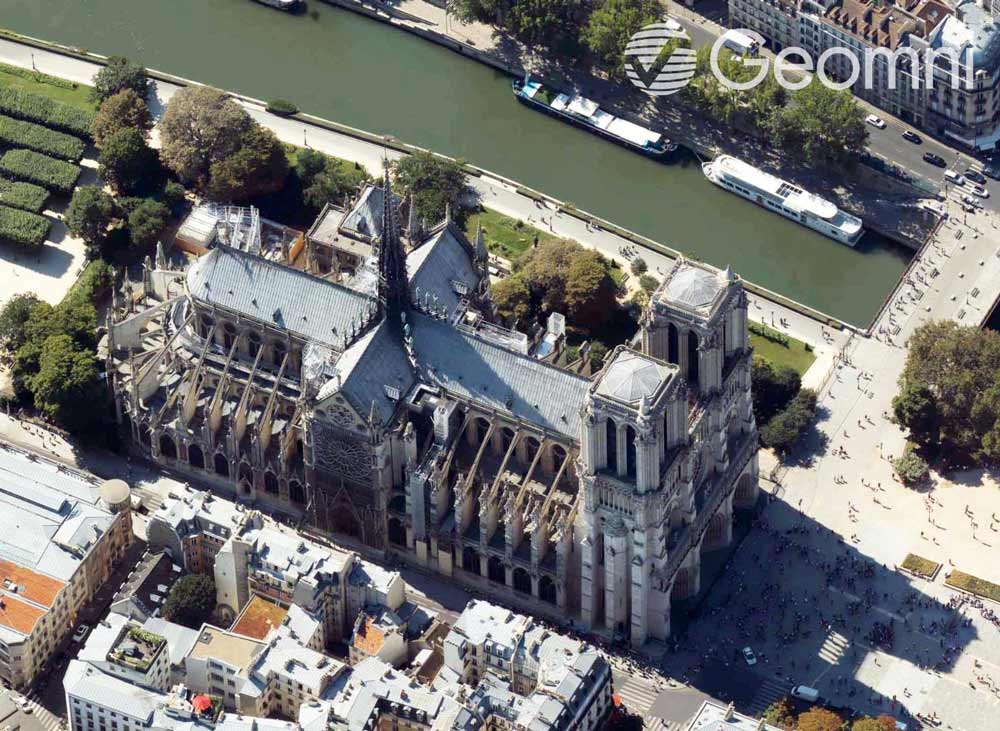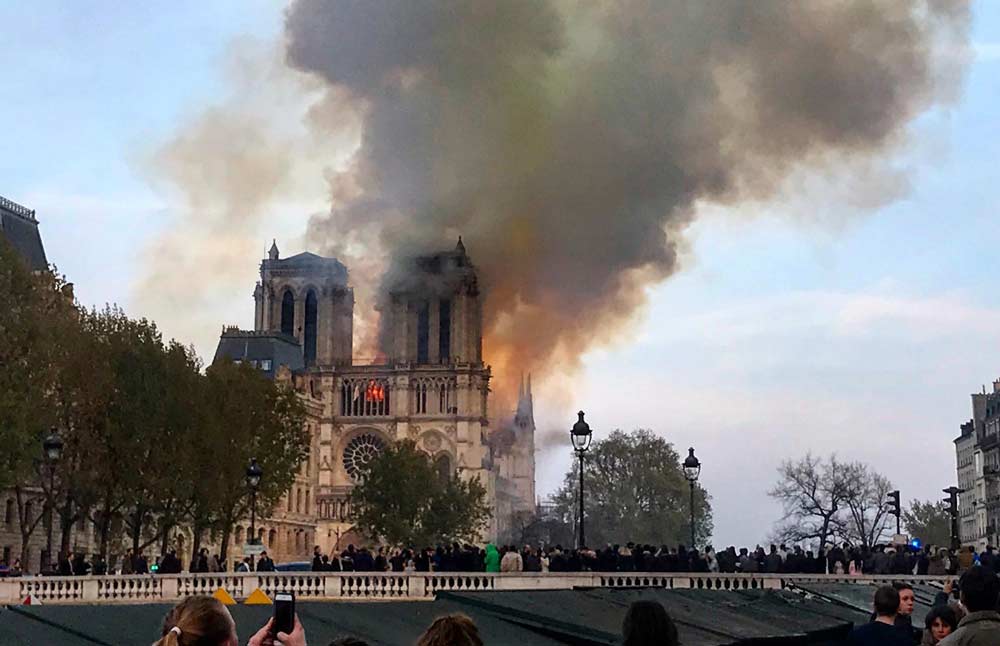
The tragic fire this week at Notre Dame in Paris is a reminder that, while subject to the same natural catastrophe perils as modern structures nearby, historic buildings are at additional risk when undergoing renovation. It is far too soon to know how the fire at Notre Dame started or to know the full extent of the damage, but we do know that the building was being worked on at the time of the blaze.

Particular Vulnerability
Because historic buildings were not designed or built to meet anything remotely approaching modern building codes, they are particularly vulnerable to damage, especially from wind and earthquakes. They are also inherently vulnerable to fire. Their interiors often feature generous open spaces and their structures frequently contain large quantities of timber that have dried over the years. In the case of Notre Dame, the fire started in the cathedral’s wooden roof beams. It is also a sad truth that historic buildings frequently lack effective fire safety systems. Sometimes they are in remote and/or inaccessible locations where firefighter access and water supply may be issues—Notre Dame was fortunate in this respect, as it is located on an island in a river in the center of a major city. Once a fire starts, it can be hard to extinguish, and the process of fighting the flames can cause more damage than the blaze itself.
The construction of historic buildings, by definition, ended long ago, but they now require regular repairs and occasionally undergo major restoration. If you’ve been to a famous historic landmark lately, the chances are that you found part of it shrouded in scaffolding and tarpaulins. Large and complex buildings have contractors at work on some portion of their structure much of the time. Unfortunately, the nature of the work required can pose a fire risk. The hot work associated with leadwork, for example, is particularly dangerous, but even regular power tools can pose a threat.

Caused by Humans
Sometimes major fires in historic structures are started by natural causes. Serious damage was inflicted upon York Minster in 1984, for example, when the roof was struck by lightning and set ablaze. Usually, however, humans are to blame. The memorable 1992 fire at Windsor Castle was started when a hot spot lamp being used for inspection work ignited a curtain. The UK National Trust’s historic house Uppark in Sussex was gutted in a dramatic 1989 blaze when contractors completing leadwork set fire to the roof. Many of the contents were saved, but the interior was devastated.
When I worked as a curator in Glasgow, Scotland, I cared for a Charles Rennie Mackintosh collection, and in England I worked with historic buildings. Mackintosh was Scotland’s greatest architect and in 2014 his masterpiece, the Glasgow School of Art—one of my favorite buildings—was seriously damaged by fire after a projector ignited materials from a student exhibit. Built between 1897 and 1909 with the “fireproof construction” of the day it fell far below modern standards in that regard. It was described by a noted Mackintosh scholar as “a firetrap waiting to happen.” When the fire started, the 120-year old heating system’s wooden ducting helped spread flames throughout the iconic structure. Contents were mostly saved, but the interiors and their irreplaceable patina were seriously damaged, and the superb library was destroyed.
An expensive restoration followed, but in June 2018, as contractors were completing their work, a second blaze gutted the entire building. Ironically, pumps for the intended water mist fire suppression system were delivered the day before the conflagration. A GBP 100 million rebuilding project was planned, but the weakened masonry shell of the structure has become dangerous and is being partially dismantled before it collapses. It has not yet been established how the second fire started, but it may have originated in the re-created library, where linseed oil-soaked rags—a known fire hazard--were being used to give the timber decor its authentic finish.
Key Takeaways
The loss of building fabric and contents arising from a fire in a historic structure is always tragic, and more so when the structure assumes international significance, as Notre Dame and the Glasgow School of Art undoubtedly do. Inevitably there will be intense debate in Paris, as there was in Glasgow, about whether to restore or replace, and how best to do so.
One fortunate result of recent fires in historic structures is that skills, processes, and technology have been developed to assist with the recovery, whatever form it may take. Repairs after a major fire can leave the building looking very much as it did before, but usually with enhanced fire safety measures incorporated. Building management and restoration processes invariably get improved in response to lessons learned and are more stringently enforced. These higher standards are usually adopted widely, which helps to protect other structures.
After the fire at Uppark, for example, the UK’s National Trust was quick to ban all hot work and naked flames at its properties and other heritage bodies followed. The Trust also took the lead in establishing contingency salvage plans for the contents of their properties and training staff and volunteers to implement them. They shared with other organizations elaborate full-scale salvage exercises conducted in association with local first responders—I participated in one. Eventually the Trust embarked on a lengthy project to reconstruct the interiors at Uppark, during which a lot was learned about the structure and its contents and invaluable restoration and conservation skills and capacity were developed.
A Long Road to Recovery
Restoration of an historic building is not something that can be accomplished by a regular contractor. It always needs highly skilled and specialized workers and sometimes requires obsolete techniques to be relearned. The recent reconstruction of the Longfellow Bridge here in Boston revived the lost art of hot riveting, for example. Materials can be hard to source. Massive timbers are now as rare as hen’s teeth and need to be seasoned for years before use; lead paints are generally outlawed. Handmade bricks of appropriate dimensions may have to be produced and alternative sources of stone found if the original quarries are closed or exhausted. The work invariably needs to meet rigorous standards and it always consumes an inordinate amount of time and money.
The destruction at Notre Dame shows just how vulnerable historic buildings can be, even when they are well cared for and surrounded by first responders. The deficiencies of older structures also highlight why rigorous building codes for new construction and their effective implementation are so important. Regulations governing the design, construction, alteration, and maintenance of structures reduce risk and save lives. There is now little left of the Glasgow School of Art to restore. Fortunately, Notre Dame has not been destroyed, and although it has clearly suffered extensive damage it will rise from the ashes.



